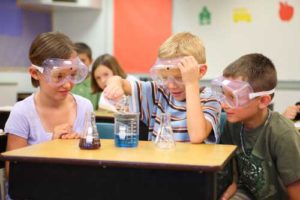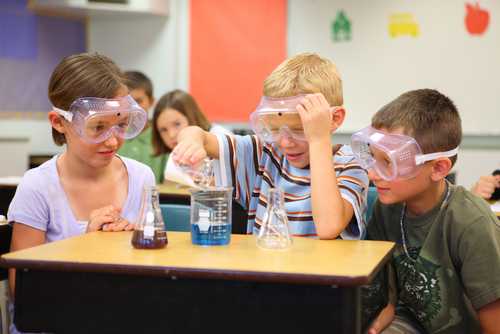 One classroom learns how NGSS can take students farther than they’ve ever been
One classroom learns how NGSS can take students farther than they’ve ever been
Ed. Note: In partnership with Common Sense Education, a national nonprofit, this is being reposted from the Graphite.org blog.
 Imagine 30 sixth-graders racing to your classroom every day, so excited about learning that they are willing to think critically and problem-solve for the next 49 minutes. This is my world every day. I’ve been teaching for more than 30 years, and this is the most excited I’ve ever seen students. What’s changed? Simply put: We integrated the Next Generation Science Standards (NGSS) into our curriculum.
Imagine 30 sixth-graders racing to your classroom every day, so excited about learning that they are willing to think critically and problem-solve for the next 49 minutes. This is my world every day. I’ve been teaching for more than 30 years, and this is the most excited I’ve ever seen students. What’s changed? Simply put: We integrated the Next Generation Science Standards (NGSS) into our curriculum.
My students and I are now so engaged in learning and actively participating in science that we often end up rushing to clean up at the bell. Parents tell me their dinnertime conversations are about science and what their kids are doing and learning. When we have our STEM Fair each year, parents are amazed by what they see and hear from the students. “Doing science” makes for a messy, noisy classroom –- but the students are engaged and thinking critically, guided by the NGSS.
Science practices
Through the eight practices in the NGSS, students get to do hands-on science exploration. As students plan investigations to answer a question posed to them, they conduct tests, record and analyze data, and communicate their results. During this process, students are engaged in their learning and gain a deeper understanding of the science concept being taught. They’re actually “doing science,” not just memorizing terms and concepts for a test.
The practices support interdisciplinary learning, too. Students engage in more writing and reading, supporting literacy, as well as become more accurate with measuring, leading to improvements in numeracy.
Relevant learning
I love hearing the questions that hands-on learning prompts my students to ask, but there’s one question I don’t miss hearing: “Why do I need to know this?” Once students become engaged, they don’t need to be convinced to learn. Studying the “Ring of Fire” doesn’t seem relevant to my students in Colorado, but understanding how buildings and structures survive unexpected movement of the earth becomes relevant when we’ve had minor earthquakes here.

I have students design structures and then test their designs on a simple shake table. They’re totally engaged in the design and testing process and can then go back to the drawing board to redesign, reinforcing engineering concepts and helping them really understand why we need to know about earthquakes.
Natural curiosity

Tap into students’ natural curiosity and let that direct their learning. Take a question and turn it into an investigation and project. We asked, “What makes a pillbug, or roly poly, move?” Students followed their natural curiosity as they designed, built, and tested their ideas. Suddenly, some students were trying to determine what food pillbugs preferred, as others were wondering which predators pillbugs must avoid. One group of students wondered if the color of light affected movement and brought in various colored lights to test their hypothesis.
As students become curious and ask questions, I encourage them to find their own answers through planning and testing. Often one question leads to another question, and that leads to more learning!
Looking for more inspiration? Check out these books from the NSTA Press:
- Doing Good Science in Middle School, A Practical STEM Guide by Jorgenson, Vanosdall, Massey, and Cleveland
- Argument-Driven Inquiry by Enderle, Bickel, Gleim, Granger, Grooms, Hester, Murphy, Sampson, and Southerland
- It’s Debatable by Zeidler and Kahn
- Translating the NGSS for Classroom Instruction by Roger Bybee
- The BSCS 5E Instructional Model by Roger Bybee
Pat Dickerson is a sixth grade science teacher at Falcon Creek Middle School in Colorado.
- TC- What student choice and agency actually looks like - November 15, 2016
- What student choice and agency actually looks like - November 14, 2016
- App of the Week: Science sensor meets your smartphone - November 14, 2016

